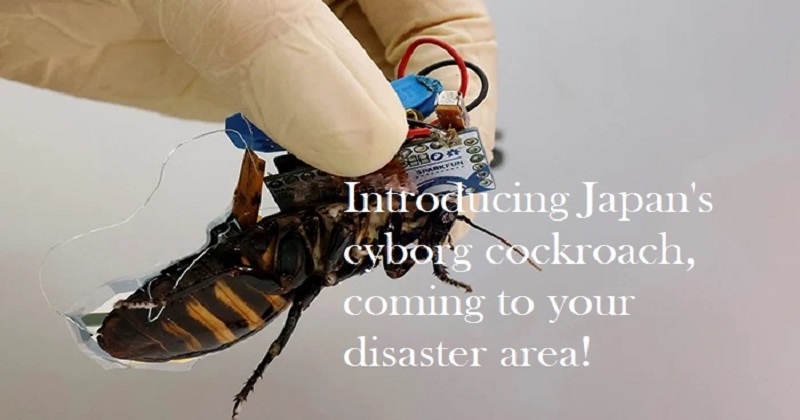
Swarms of cyborg cockroaches may be the first rescuers to find survivors if an earthquake occurs in the not too distant future, even if they are buried beneath tonnes of debris. This is a potential use of a recent innovation by Japanese researchers, who showed how to place ‘backpacks’ of solar cells and electronics on the bugs and control their movement using a remote control.
A flexible solar cell film that is 4 microns thick, or roughly 1/25 the thickness of a human hair, that can fit on the insect’s abdomen was developed by Kenjiro Fukuda and his colleagues at the Thin-Film Device Laboratory at the Japanese research giant Riken. The film allows the roach to move freely, and the solar cell produces enough power to analyse and transmit directional information into sensory organs on the bug’s hindquarters.
Insect cyborgs that can access dangerous locations far more quickly than robots may one day be created thanks to the research, which builds on earlier insect-control trials at Nanyang Technological University in Singapore. Fukuda explained that because tiny robots’ batteries drain rapidly, there is less time for investigation. When it comes to an insect’s motions, a crucial advantage of a cyborg insect is that the insect is moving itself, meaning that the amount of power needed is significantly reduced.
Because they are large enough to transport the necessary equipment and lack wings that would obstruct the research, Fukuda and his colleagues decided to employ Madagascar hissing cockroaches. The bugs are able to move through small gaps and correct themselves when they are turned over, even with the backpack and film affixed to their backs.
A lot of work has to be done in the research. In a recent demonstration, Riken researcher Yujiro Kakei told the wireless Bluetooth-enabled cyborg roach to turn left, forcing it to go in that approximate direction. However, the problem circled after receiving the ‘correct’ signal. The next task is to reduce the size of the parts to enable installation of sensors and potentially cameras while still allowing the insects to move more freely. 5,000 yen ($35) worth of components from Tokyo’s renowned Akihabara electronics area, according to Kakei, were used to build the cyborg bag.
The roaches can resume their lives in the lab’s terrarium when the film and backpack have been removed. The four-month maturation period for the insects, which may survive in captivity for up to five years, is known. Fukuda believes that the solar cell film, which is made up of small layers of plastic, silver, and gold, has many uses beyond disaster rescue. For monitoring vital signs, the film might be incorporated into skin patches or clothes. He said that if used under a parasol on a bright day, the material may produce enough electricity to power a smartphone.

Post Your Comments